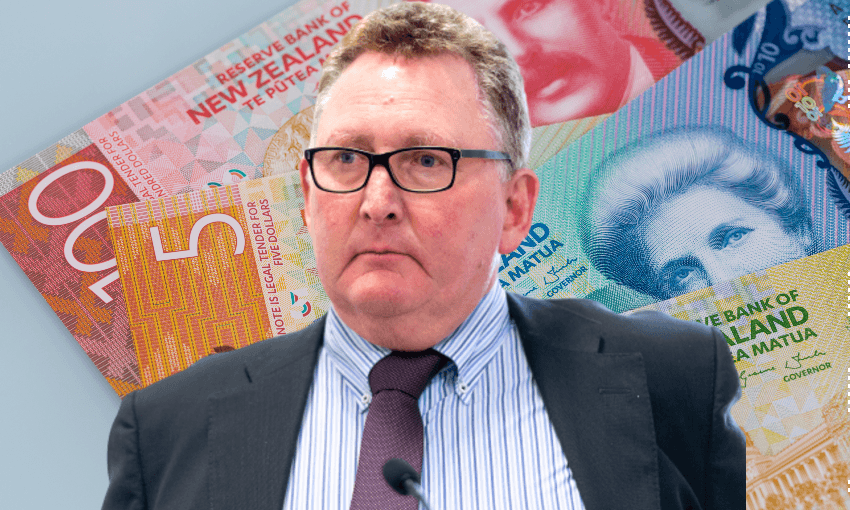Bank economists are all but certain the RBNZ will raise the OCR sooner than initially forecast. But as BusinessDesk’s Rebecca Howard writes, the ongoing threat of Covid-19 means the central bank isn’t likely to rush such a move.
Caution will reign in the central bank’s short monetary policy statement, despite economists beating the rate hike drums. Best guess? It will acknowledge rising inflation and better than expected employment data, but also continue to point to the uncertainties surrounding the world’s recovery from Covid-19.
The central bank is due to make a rate decision and publish a short statement on Wednesday. New Zealand’s official cash rate is currently at a record low 0.25% and the central bank has indicated it will begin lifting rates in September 2022. However, a raft of indicators from economic growth to business confidence have come in much stronger than expected when it made that forecast. While it may make sense to hike sooner central banks tend to err on the side of caution. The bottom line is until the population is widely vaccinated new lockdowns are always possible.
The RBNZ will likely tweak its language to open up the possibility that rates could be lifted sooner, in particular given a raft of economists are now tipping a rate hike as early as this November. Up until now, the monetary policy committee has agreed to maintain its current stimulatory monetary settings until it is confident that consumer price inflation will be sustained near the 2% per annum target midpoint, and employment is at its maximum sustainable level. It will likely strip out the sentence that says meeting these requirements will necessitate “considerable time and patience”. That may be about as far as it will go.
First of all, the review isn’t a full monetary policy statement so it won’t provide any forecasts or commentary around its thinking. Second, while New Zealand’s economy is much stronger than expected, Covid-19 is still an issue. Just look at Australia. Recently, NSW Premier Gladys Berejiklian conceded Sydney’s lockdown may have to be extended into a fourth week in an admission the state does not yet have its coronavirus outbreak under control after a record day of new infections, the AFR said.
The latest scare around the visitor from Australia with the delta variant will have caused some jitters. Jarden economist John Carran said recent market expectations around a rate hike may be premature. According to Carran: “Unprecedented supply-side constraints are the primary factor for inflation pressures currently being experienced and there is uncertainty about how they will play out and how long the pressures will persist for.” Also, the RBNZ has consistently reiterated “it will be cautious in the face of uncertainty”.
Market expectations, however, are running hot. ANZ Bank is expecting the official cash rate to be lifted to 0.5% in November, with further increases at each review until it reaches 1.75% in early 2023. First-quarter economic growth was 1.6% versus the central bank’s expected 0.6% contraction. “That indicates a more advanced, broad-based recovery than anticipated, which will mechanically bring forward the RBNZ’s forecast for when the official cash rate needs to rise,” it said.
Also, pricing intentions in the ANZ Business Outlook survey have skyrocketed. A net 84% of retailers intend to raise their prices. Job ads have continued to soar, suggesting the labour market is exceptionally tight. ASB Bank also expects a November rate hike after this week’s business confidence survey from the NZ Institute of Economic Research that also pointed to inflationary pressure and a very tight labour market. Inflation and demand gauges “are so strong that it is increasingly clear that the RBNZ cannot afford to wait much longer before starting to reduce the amount of monetary stimulus currently in place,” it said.
BNZ is also picking November after the NZIER business survey confirmed its view “the only questions now are when will rates rise and by how much?”. Westpac is also pointing to November. However, it also noted this week’s monetary policy review is only likely to start setting the scene for a normalisation of monetary policy, without committing to a particular timing at this stage. The real fireworks will come in August when the RBNZ publishes a full monetary policy review, including its forecast interest rate track.
This article originally appeared on BusinessDesk. Their team publishes quality independent news, analysis and commentary on business, the economy and politics every day. Find out more.
Follow When the Facts Change, Bernard Hickey’s essential weekly guide to the intersection of economics, politics and business on Apple Podcasts, Spotify or your favourite podcast provider.
